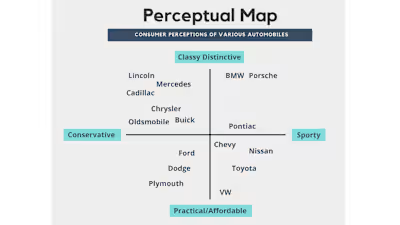The Question Before the Answer: Challenging 'Brand-First'

Photo of Dave Trott. Source: 42courses.com
If you've read the works of Dave Trott, marketing maven and creative powerhouse, you're likely familiar with his provocative quote: "The answer is brand, now what's the question?"
At first glance, this quip may seem to underscore the paramount importance of the brand in all marketing endeavours. However, on closer inspection, it reveals a more nuanced critique of the pitfalls of conventional brand management.
Today, the business landscape is teeming with brand managers who swear by a 'brand-first' approach. This modus operandi takes the brand as the starting point and assumes it to be the solution to all marketing conundrums. However, while brands undoubtedly play a crucial role in the business ecosystem, prioritizing brand as the universal answer can lead to myopic decision-making and, ultimately, ineffective strategies.
The Problem with Brand First Marketing
The problem with the 'brand-first' approach lies in its tendency to leapfrog over the fundamental business issue at hand. It's akin to a doctor prescribing a medication before conducting a diagnosis.
Sure, there's a chance the medicine might address the patient's symptoms, but without a thorough understanding of the underlying condition, this treatment approach is, at best, a gamble.
Consider, for instance, a company witnessing a decline in sales. A 'brand-first' manager might assume that a brand refresh or repositioning effort is the answer. They might pump resources into a new logo, a catchy tagline, or a revamped brand story.
However, the issue could lie elsewhere—maybe the product's quality has dipped, or perhaps the customer service is lacklustre. In such cases, no amount of branding effort would effectively address the root cause of the problem.
Consider, for instance, a company witnessing a decline in sales. A 'brand-first' manager might assume that a brand refresh or repositioning effort is the answer. They might pump resources into a new logo, a catchy tagline, or a revamped brand story.
However, the issue could lie elsewhere—maybe the product's quality has dipped, or perhaps the customer service is lacklustre. In such cases, no amount of branding effort would effectively address the root cause of the problem.
Instead of diving headfirst into the world of branding, business leaders should first understand the crux of their business challenge. They should engage in diligent problem-solving, guided by a thorough analysis of the situation and an understanding of their customer's needs and preferences. Only then should they determine the role the brand plays in resolving the issue.
Instead of diving headfirst into the world of branding, business leaders should first understand the crux of their business challenge. They should engage in diligent problem-solving, guided by a thorough analysis of the situation and an understanding of their customer's needs and preferences. Only then should they determine the role the brand plays in resolving the issue.
Solving Business Problems
Brands indeed have immense power. They evoke emotions, drive customer loyalty, and differentiate a business in a crowded marketplace. In my previous articles, "Feeling the Brand: The Overlooked Element in Building Powerful Connections" and "The Power of Connection: Positioning Your Brand in the Mindscape," I explored how brands connect with customers on a deep, emotional level. However, these potent effects should not blind us to the need to tackle the fundamental business issues at the heart of any problem.
Dave Trott's clever quote serves as a timely reminder that while brands are part of the answer, they are not always the answer. It reminds us to question, dig deeper, and recognize the brand's role within the larger business context. After all, when we get down to it, the brand is just one piece of the puzzle in the intricate game of business.
So, let's flip Trott's quote on its head: "What's the question, and is the answer brand?" Only by addressing the question first can we devise effective solutions, and truly harness the transformative power of our brands.
Like this project
Posted Jun 12, 2023
Using brand not as an end in itself but to solve real business problems.








